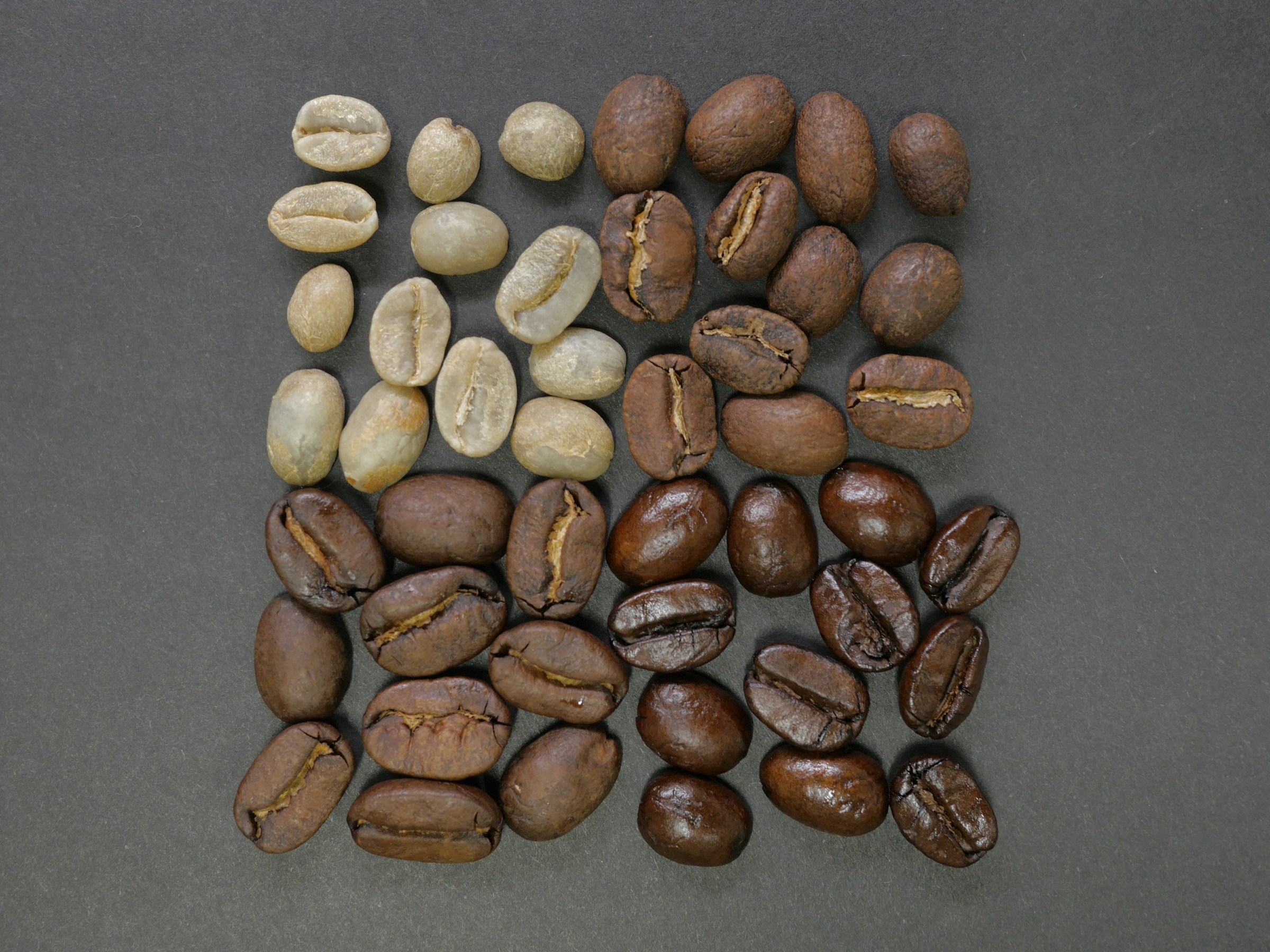Coffee is a beloved beverage that unites people across the globe.
From the bustling streets of urban cities to the quiet corners of small towns, coffee has a special place in the hearts of millions.
In this guide, we dive into the essence of what makes each cup of coffee unique—the coffee beans themselves.
Specifically, we will look at the 4 main types of coffee beans which are Arabica, Robusta, Excelsa, and Liberica.

Unveiling the World of Coffee Beans
Embarking on our coffee journey, it’s essential to start at the very beginning and answer a fundamental question:
What exactly is a coffee bean?
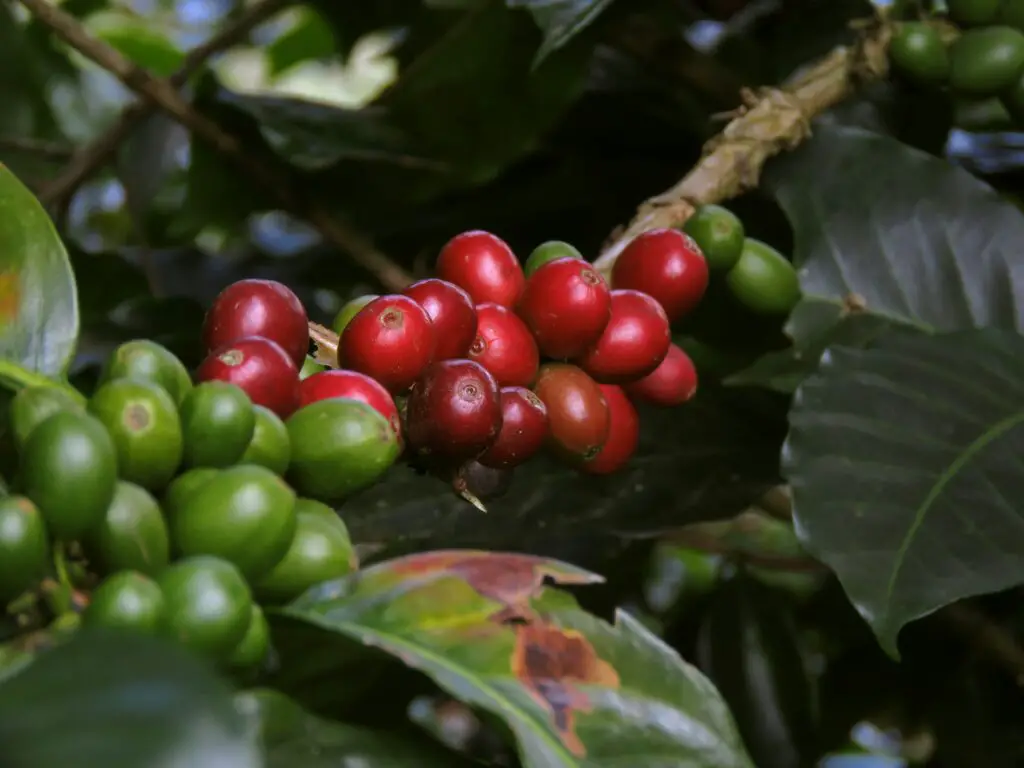
What is a Coffee Bean?
A coffee bean is the seed of the Coffea plant, nestled inside the red or purple fruit often referred to as a cherry.
Despite its name, the coffee bean isn’t a bean at all but a seed.
The Coffea plant, which is native to tropical Africa and Asia, has been at the center of global culture, economy, and environment for centuries.
Its seeds, once dried, roasted, and ground, become the coffee we cherish every morning.
This process transforms the green seeds into aromatic beans full of flavor and complexity, ready to brew into the perfect cup of coffee.
The origins of coffee are shrouded in legend, with one of the most popular tales tracing back to Ethiopia, where it is said a goat herder named Kaldi noticed his goats frolicking energetically after eating the red fruit from a certain bush.
Curious, Kaldi tried the fruit himself and was soon as lively as his goats.
Monks at a local monastery then discovered they could roast and brew the seeds to keep awake during evening prayers, marking the beginning of coffee’s global journey.
The Coffee Plant and Its Global Journey
The coffee plant has traveled far and wide from its origins in Africa to become a global commodity grown in over 70 countries.
The journey began in the 15th century in Yemen, where it was first cultivated and traded through the port of Mocha.
Coffee houses, known as “qahveh khaneh,” sprang up in the Middle East and North Africa, becoming centers of social activity and commerce.
By the 17th century, coffee had made its way to Europe, becoming wildly popular and sparking a new social trend with the opening of coffee houses.
The cultivation of coffee plants spread to the Dutch and French colonies in the Caribbean, Latin America, and Asia, establishing coffee as a global crop.
The ideal conditions for growing coffee—tropical climates along the equator, known as the Bean Belt, high altitudes, and specific soil types—meant that regions such as Brazil, Colombia, Ethiopia, and Vietnam became key players in coffee production.
The Four Main Coffee Bean Types
Let’s explore the four main coffee bean types that coffee enthusiasts cherish worldwide.
Arabica (Coffea arabica)
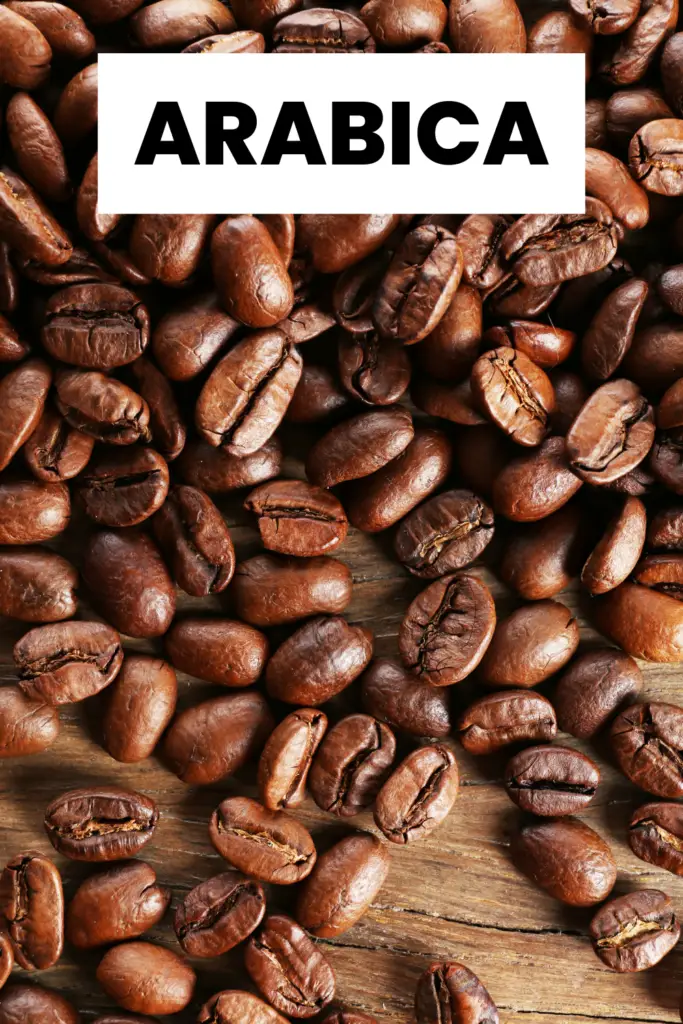
Arabica beans are the world’s most popular coffee beans, beloved for their smooth, complex flavor profiles.
These beans are grown primarily in Latin America, eastern Africa, Asia, and Arabia, thriving at high altitudes of 600 to 2000 meters.
Arabica coffee plants prefer cool, subtropical climates with plenty of moisture, rich soil, and shade.
Due to their delicate nature, Arabica beans require careful cultivation and processing, contributing to their higher price point.
The flavor of Arabica coffee is often described as sweet and soft, with fruity, floral notes that can vary widely depending on the specific region where they are grown.
This variability is one of the reasons Arabica beans are so popular among coffee enthusiasts; they offer an extensive range of tastes and aromas.
Their lower caffeine content compared to other coffee types makes them a favorite for those who are sensitive to caffeine but still appreciate a cup of coffee with rich flavor and aroma.
Robusta (Coffea canephora)
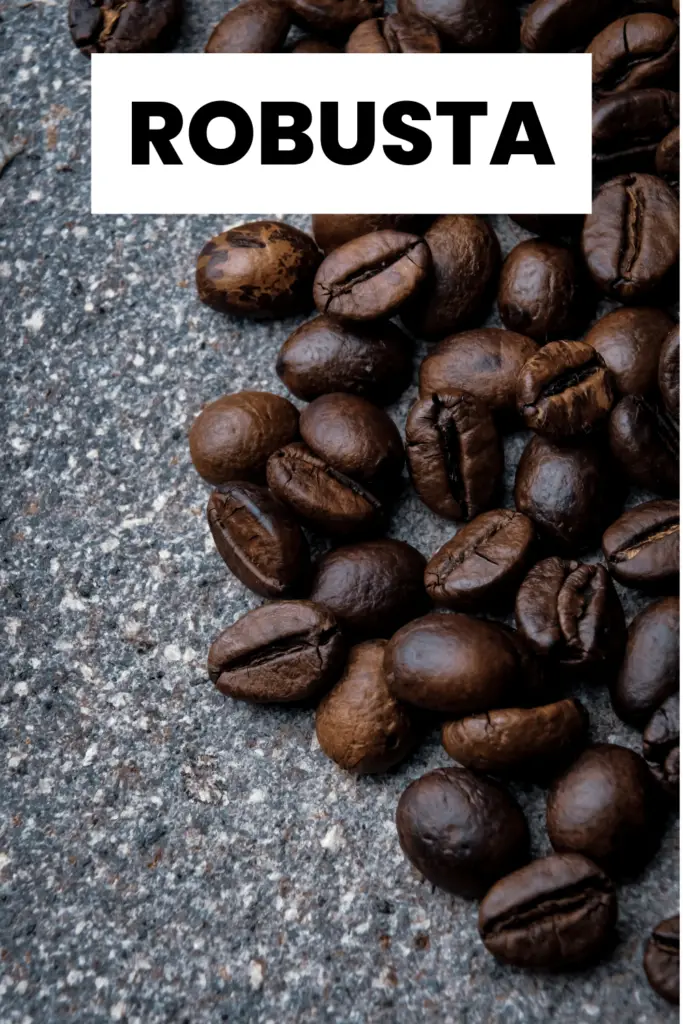
Robusta beans pack a punch with their strong, robust flavor and higher caffeine content, which not only gives the coffee a more bitter taste but also makes the plant more resistant to pests and diseases.
This resilience allows Robusta coffee plants to thrive at lower altitudes than Arabica, primarily in regions of Africa, Indonesia, and Vietnam.
The appeal of Robusta beans lies in their bold, earthy flavor with hints of chocolate and a characteristic strong, often described as “full-bodied” taste.
These beans are typically used in blends to add body and crema to espresso shots, making them indispensable in the espresso culture.
Their affordability and ease of cultivation have made Robusta a popular choice for mass-market coffee production, especially in instant and dark roast blends.
Liberica (Coffea liberica)
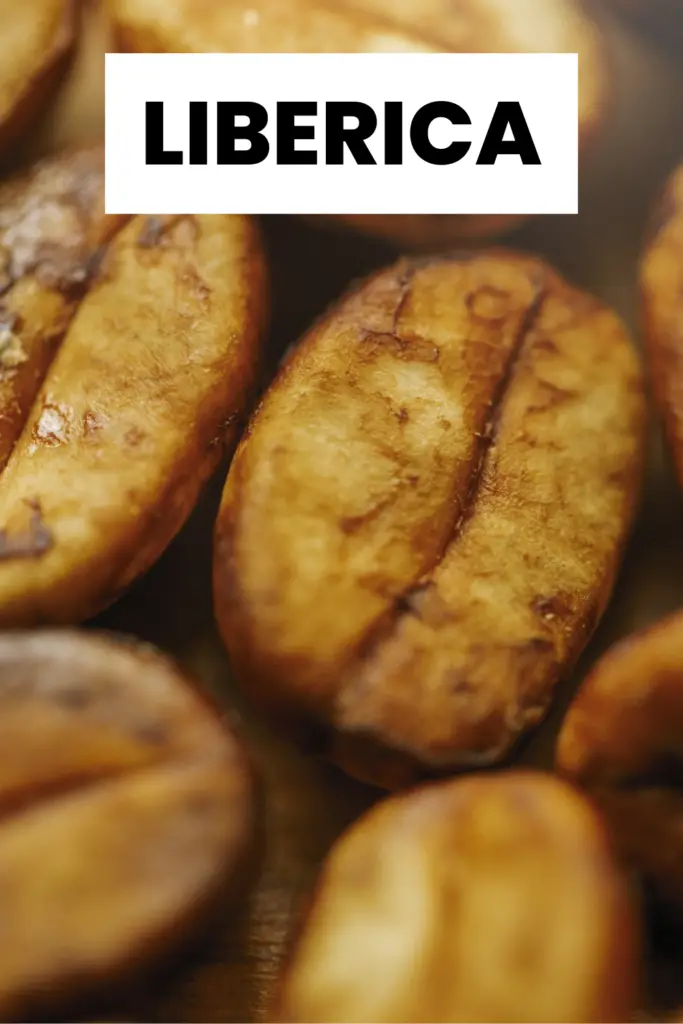
Liberica beans are distinct outliers in the coffee world, known for their unique flavor and the distinctively irregular shape of their beans.
Grown mainly in Malaysia and West Africa, Liberica coffee plants are hardy and capable of thriving in harsh climates where Arabica and Robusta cannot.
The flavor profile of Liberica is an intriguing mix of smoky, fruity, and floral notes, with a somewhat woody or nutty taste.
This unique combination sets Liberica apart from other coffee types, creating a niche market for these beans among coffee connoisseurs looking for a rare and distinctive coffee experience.
Excelsa (Coffea liberica var. dewevrei)
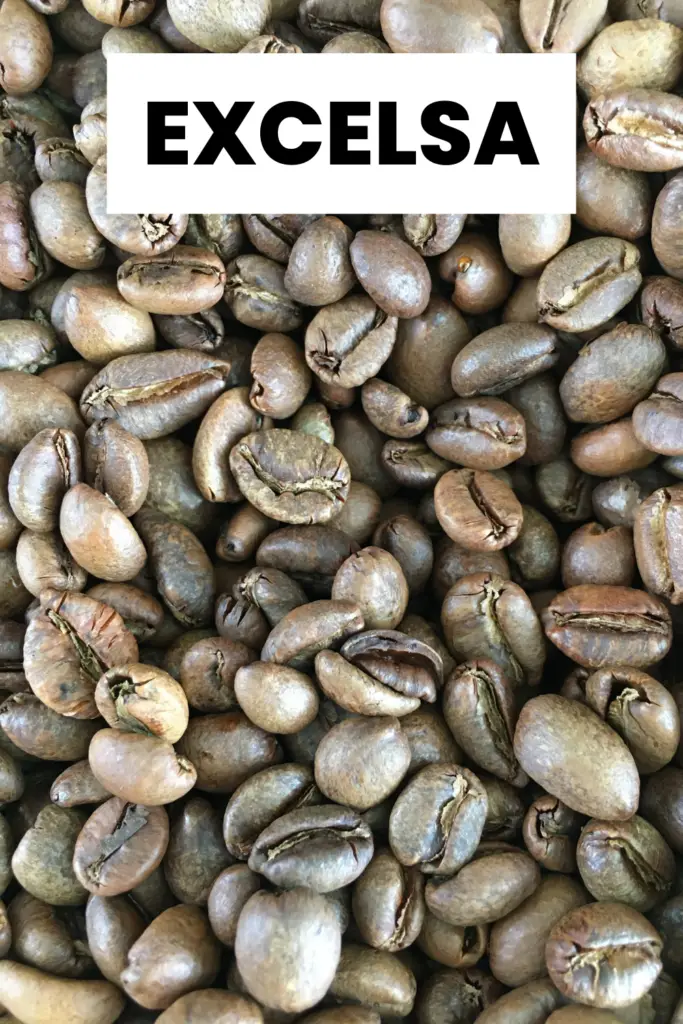
Excelsa, often classified under the Liberica family, boasts a tart, fruity flavor profile that is markedly different from traditional Liberica.
These beans are primarily grown in Southeast Asia and contribute to a small fraction of the world’s coffee production.
Excelsa’s distinctive flavor profile, which combines light roast characteristics with the deeper, more complex notes of dark roasts, makes it a prized choice for specialty coffee blends.
It offers a unique tasting experience, with hints of fruit and tartness, providing a refreshing contrast to the more common coffee flavors.
Coffee Origins and Terroirs
Let’s explore how geography shapes the flavors in our cups and take a tour of the world through its coffee-producing regions.
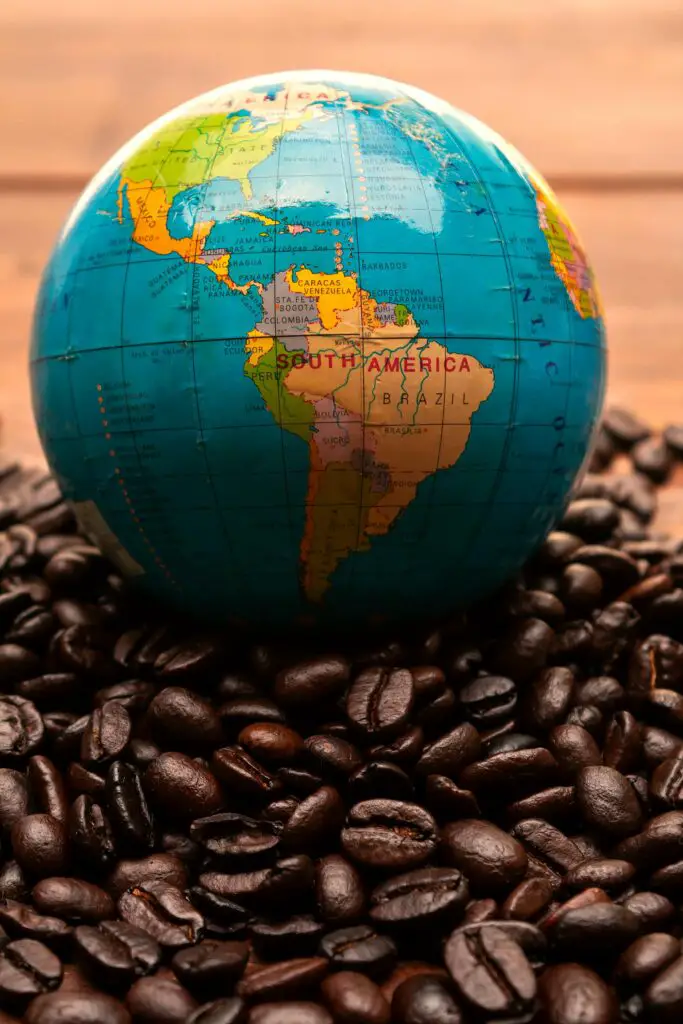
The Influence of Geography on Flavor
The flavor of coffee is profoundly impacted by where it’s grown.
The combination of climate, elevation, and soil—collectively known as terroir—plays a significant role in determining the taste profile of coffee beans.
Cooler temperatures found at higher elevations slow the growth of coffee cherries, resulting in denser beans that are richer in flavor.
This is why coffee from places like the highlands of Ethiopia or the mountains of Colombia has such a reputation for depth and complexity.
Soil type also influences coffee flavor.
Volcanic soil, for example, can impart a distinctive minerality and acidity, contributing to the vibrant taste profiles of coffee from regions like Guatemala and Costa Rica.
Meanwhile, the climate affects the cherry’s ripening process; consistent rainfall and ample sunshine ensure the cherries develop fully, accentuating their inherent sweetness and acidity.
Coffee Growing Regions Around the World
Latin America
Known for producing Arabica beans, Latin American countries such as Brazil, Colombia, and Costa Rica are renowned for their coffee.
Brazilian coffee is often noted for its chocolatey, nutty flavors, making it a favorite for espresso blends.
Colombia, with its varied terrain, produces coffee that can range from sweet and fruity to rich and caramel-like.
Costa Rican coffee is celebrated for its bright acidity and full-bodied profile, often with hints of fruit and chocolate.
Africa
Africa, particularly Ethiopia and Kenya, offers some of the world’s most distinctive coffees.
Ethiopian coffee is famous for its floral, fruity flavors that can resemble tea in their lightness and complexity, embodying notes of jasmine or lemon.
Kenyan coffee, on the other hand, is known for its bold acidity and flavors that can range from blackcurrant to tomato, truly showcasing the diversity of coffee flavors.
Asia
Indonesian coffees, such as those from Sumatra, are loved for their full body and earthy, spicy flavors, often with a hint of sweetness reminiscent of dark chocolate.
Vietnam, primarily known for Robusta beans, produces coffee that is strong, bold, and ideal for those who appreciate a more intense coffee experience.
The Pacific
The islands of the Pacific, including Hawaii, offer unique coffee experiences.
Hawaiian Kona coffee is particularly prized for its smooth, mild profile with hints of nuts and fruits, reflecting the rich volcanic soil and ideal climatic conditions of the region.
Coffee Roasts and Brews
Diving deeper, we find that the journey from bean to brew involves critical decisions that significantly impact the final cup’s flavor.
Two key elements in this process are the roast of the coffee and the method by which it is brewed.
Understanding Coffee Roasts
The roast level of coffee beans affects their flavor, aroma, acidity, and body.
As beans are roasted, chemical reactions occur that develop their complex flavor profiles.
The duration and temperature of the roast will determine whether coffee is light, medium, or dark roasted, each bringing its unique characteristics to the cup.
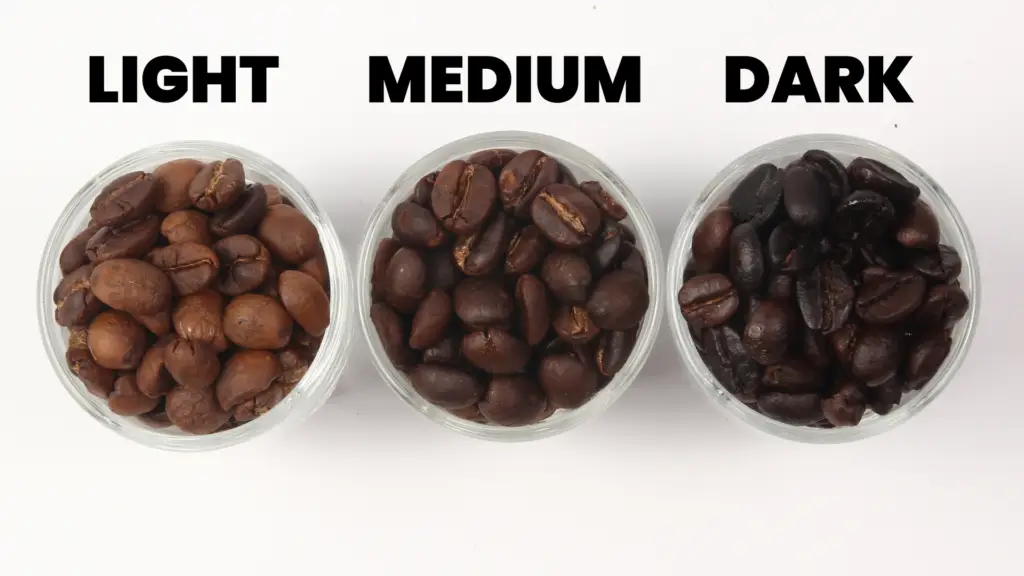
Light Roasts
These beans are roasted for the shortest time, often until the first “crack” is heard.
Light roasts retain most of the bean’s original flavor and characteristics, which can be especially pronounced in single-origin coffees.
They tend to have higher acidity and are lighter in body, offering a delicate, nuanced cup that can reveal floral, fruity, or herbal notes.
Light roasts are perfect for those who appreciate the subtle and unique flavors inherent in the coffee.
Medium Roasts
Roasted a bit longer, medium roasts strike a balance between the bean’s natural flavors and the flavors created in the roasting process.
They have a more balanced acidity, fuller body, and a richer flavor profile that can include notes of chocolate, nuts, and fruit.
Medium roasts are versatile and widely enjoyed, appealing to those who appreciate a harmonious cup of coffee.
Dark Roasts
These beans are roasted until after the second “crack,” resulting in oils rising to the surface of the beans.
Dark roasts have a lower acidity, full body, and robust flavors with pronounced bitterness.
The roasting process dominates the flavor profile, often yielding smokey, toasty, or chocolaty notes.
Dark roasts are favored by those who enjoy a bold, strong coffee with a pronounced roasted character.
Choosing the Right Grind and Brewing Method
The grind size of your coffee and the method you use to brew it are closely linked, as different brewing methods are optimized for different grind sizes.
The right combination can extract the best flavors from your beans, while the wrong one can lead to a less desirable cup.
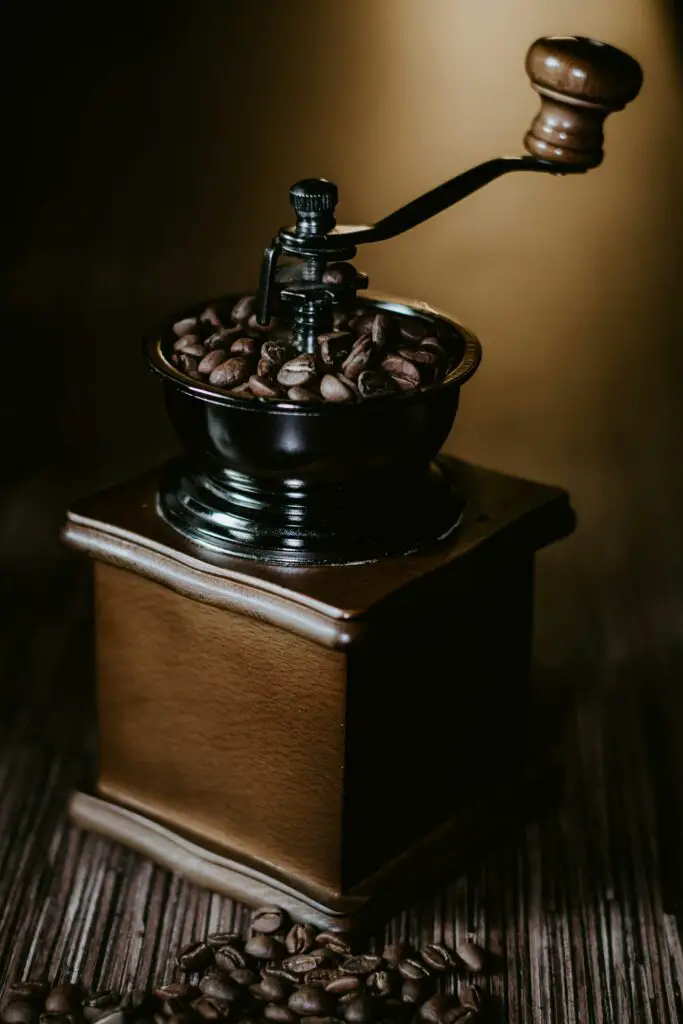
- Coarse Grind: Ideal for brewing methods with longer extraction times, such as French press or cold brew. A coarse grind prevents over-extraction and bitterness, producing a smooth, well-rounded cup.
- Medium Grind: Perfect for drip coffee makers and pour-over methods. This grind size allows for a balanced extraction, capturing a wide range of flavors without becoming overly bitter or sour.
- Fine Grind: Best suited for espresso and some stovetop espresso makers, where the extraction time is short and pressure is used to brew the coffee. A fine grind ensures a rich, concentrated shot of espresso with a creamy texture and intense flavor.
Decaf and Specialty Coffees
For those who love the taste of coffee but are sensitive to caffeine, or for enthusiasts eager to explore the most unique and rare flavors the coffee world has to offer, there are two special categories worth diving into: decaffeinated coffee and specialty coffee varieties.
The Decaffeination Process
Decaffeinated coffee offers the rich flavors and aromas of coffee without the kick of caffeine.
But how exactly is coffee decaffeinated?
The process typically involves soaking the green (unroasted) beans in water to dissolve the caffeine and then using a solvent or activated carbon to selectively remove the caffeine from the water.
This process can be done using various methods, such as the Swiss Water Process, which relies on solubility and osmosis to decaffeinate coffee without the use of chemicals, ensuring that the coffee’s intrinsic flavor is as untouched as possible.
Regardless of the method, the goal is the same: to reduce the caffeine content to minimal levels while preserving the bean’s natural and unique flavors.
While decaf might have once had a reputation for being subpar in taste compared to its caffeinated counterparts, advances in decaffeination techniques have significantly improved its quality, offering decaf drinkers a cup that’s as rich and satisfying as any traditional coffee.
Exploring Specialty Coffee Varieties
For those seeking a unique taste experience, specialty coffee varieties offer a treasure trove of flavors.
These coffees are often single-origin or micro-lot productions that provide distinctive taste profiles, shaped by the unique conditions of their specific growing region.
Here are a few rare and exotic coffee beans worth exploring:
Geisha/Gesha Coffee
Originally from Ethiopia but famously grown in Panama, Geisha coffee is renowned for its exceptional aromatic qualities, with floral and citrus notes that make it a favorite among specialty coffee aficionados.
Kopi Luwak
One of the most controversial and expensive coffees in the world, Kopi Luwak is produced from beans that have been eaten and excreted by the Asian palm civet.
The unique process is said to impart a remarkably smooth and rich flavor profile, though ethical and sustainability concerns have arisen around its production.
Yemen Mocha
Grown in the mountainous regions of Yemen, this ancient coffee is prized for its rich, winey acidity and chocolatey flavor.
The beans are smaller and more irregular than most, but they offer a cup that is deeply complex and full of history.
Blue Mountain Coffee
Grown in Jamaica’s Blue Mountains, this coffee is celebrated for its mild flavor and lack of bitterness.
The beans are typically very large and have a vibrant blue-green color.
Blue Mountain coffee provides a smooth and clean cup, with a sweet, floral aroma.
Conclusion
Understanding the differences between Arabica, Robusta, Liberica, and Excelsa beans opens up a world of flavors, aromas, and experiences that can transform your coffee-drinking into a true adventure.
So, we encourage you to step out of your coffee comfort zone, experiment with new and unfamiliar beans, and let each sip broaden your horizons.
Remember, the journey of coffee is endless, with each bean offering a new path to explore.
So, grab your favorite mug, and let’s continue to discover the rich and diverse world of coffee together.
Happy brewing!
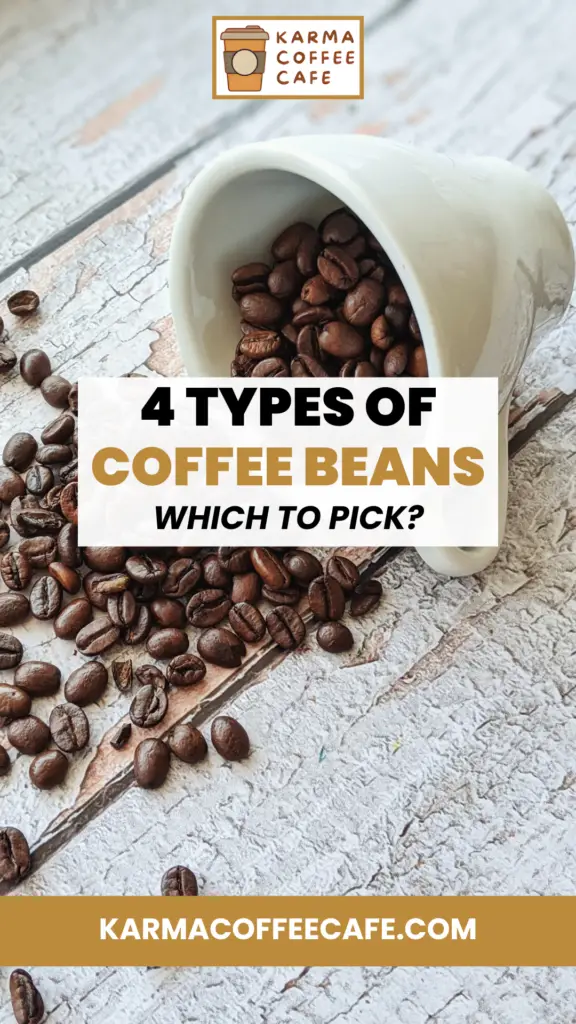
FAQ’s
What are the 4 types of coffee beans?
The four main types of coffee beans are Arabica (Coffea arabica), Robusta (Coffea canephora), Liberica (Coffea liberica), and Excelsa (Coffea liberica var. dewevrei).
What type of coffee bean is best?
The “best” type of coffee bean is subjective and depends on personal preference.
Arabica beans are prized for their smooth, complex flavor profiles, while Robusta beans are favored for their strong, bold taste and higher caffeine content.
Liberica and Excelsa offer unique flavors for those seeking something different.
What are the two main coffee beans?
The two main types of coffee beans are Arabica and Robusta.
These beans dominate the global coffee market, with Arabica being the most popular for its quality and flavor, and Robusta for its robustness and higher caffeine content.
Which is better, Arabica or Robusta?
Whether Arabica or Robusta is “better” depends on individual taste preferences.
Arabica beans are generally considered higher quality, offering a wider range of flavors with higher acidity and less bitterness.
Robusta beans have a stronger, more bitter flavor with a higher caffeine content, making them ideal for those who prefer a bold, rich taste.
Which is more expensive, Arabica or Robusta?
Arabica beans are typically more expensive than Robusta beans.
This price difference is due to Arabica’s more complex flavor profile, higher quality, and the fact that they are more delicate and require more precise growing conditions.
What is the most popular coffee bean?
Arabica is the most popular coffee bean type worldwide, known for its smooth, nuanced flavors and accounting for about 60-70% of the world’s coffee production.
Which is the most expensive coffee in the world?
Kopi Luwak is often cited as the most expensive coffee in the world due to its unique processing method involving civets.
Its price is attributed to the labor-intensive process of collection and the rarity of the beans.
What Types of Coffee Beans Does Starbucks Use?
Starbucks primarily uses high-quality Arabica coffee beans for its range of coffee blends and single-origin coffees.
The company is known for sourcing beans from various regions around the world to create its signature tastes and flavors.

